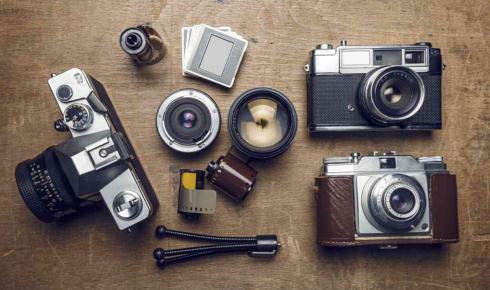There’s a strange kind of silence that falls when someone points a camera at you. You suddenly become aware of your shoulders, your smile, even the way your hair falls. For a second, you feel frozen. And yet, if you’ve ever seen a photograph of yourself that truly felt like you—natural, unforced, almost like the picture was breathing—you’ll know the magic that can happen when the right person is behind the lens.
We live in an age overflowing with images. Our phones buzz with selfies, group shots, vacation snaps, and filtered posts. It’s easy to think photography has become disposable. But then, out of nowhere, a single image makes you stop scrolling. It lingers, it says something. That’s the difference between a photo and a portrait—it’s not about the device, it’s about intention.
Why the Person Behind the Camera Matters
Anyone can press a button on a phone, but not everyone can capture the essence of someone else. A portrait is part psychology, part artistry. The camera just happens to be the tool. What makes the difference is empathy—the photographer’s ability to connect with their subject, to create comfort in what could otherwise feel awkward or staged.
It’s why people still search for a Melbourne Photographer instead of simply trusting their latest smartphone upgrade. A professional knows how to work with light, how to encourage ease, how to notice those micro-expressions that make an image feel alive.
The Studio as a Stage
Not all portraits are taken outdoors under a golden sky. Some of the most powerful ones are crafted inside four walls, under controlled light, in spaces designed to highlight the subject rather than the background. That’s where a photo portrait studio comes in.
A good studio isn’t sterile—it’s a stage. It strips away distraction, letting the subject’s personality come forward. The lighting can be softened, sharpened, angled to add drama or warmth. For people who feel nervous outdoors, with strangers walking past or cars honking in the distance, the studio offers privacy. It becomes a little world where all that matters is the connection between subject and photographer.
More Than a Face in a Frame
Portraits aren’t really about what you look like. They’re about what you feel like. A mother holding her newborn, a graduate stepping into the next chapter, an entrepreneur needing to put a face to their brand—these aren’t just images. They’re markers of identity, of moments we don’t want to forget.
We’ve all had the experience of flipping through old albums (or scrolling through cloud folders) and suddenly being hit with nostalgia. The hairstyle you thought was cool. The shirt you’d never wear now. The nervous smile before the first day at a new job. Portraits freeze these small pieces of our timeline, and decades later, they’re priceless.
The Awkwardness Factor
Let’s be honest: most of us don’t know what to do with ourselves in front of a lens. There’s that awkward shifting of weight, the half-smile that doesn’t feel right, the panic over which side of your face is your “good side.” The funny thing is, almost everyone feels this way, even the most confident people.
A skilled photographer knows how to work through this. They don’t just bark instructions; they guide gently, maybe joke around, maybe get you talking about something completely unrelated until you forget the camera is even there. That’s when the magic shot happens—the unguarded laugh, the thoughtful gaze, the little spark of authenticity.
A Portrait’s Place in the Digital World
It might sound ironic, but portraits are more important now than ever before. With so much of our lives unfolding online, first impressions often happen through a screen. Whether it’s a LinkedIn profile, an artist’s website, or even a dating app, your photo sets the tone before a word is exchanged.
This isn’t about vanity—it’s about storytelling. A polished, thoughtful portrait can say: “I’m approachable.” “I take myself seriously.” Or simply: “This is me.” In a digital sea of throwaway images, a single authentic portrait stands out.
Studio vs. Street
There’s always the question: should you take portraits in a studio or outdoors? The truth is, both have their charm. Studios offer precision—controlled lighting, neutral backdrops, focus on expression. Outdoor shoots bring life—natural textures, shifting light, a sense of spontaneity.
Neither is better, just different. The choice depends on the story you’re trying to tell. An actor might need both: the clean, simple studio headshot for casting calls, and the moodier outdoor portrait to show personality. A professional might stick with a crisp studio shot, while a creative entrepreneur may want the vibrancy of the city in the background.
Why It’s Worth the Investment
Of course, there’s the practical side: cost. Professional photography isn’t always cheap, and with the ease of taking photos on your phone, it can be tempting to skip it. But here’s the thing—unlike the gadgets and subscriptions we keep paying for, portraits last.
A single portrait can be used across professional platforms, framed in your home, or passed down through generations. Unlike fast fashion or one-off nights out, portraits grow in value. They become heirlooms, conversation starters, reminders of who you were in that moment.
Finding Yourself in the Frame
What surprises many people is how seeing yourself in a portrait can change the way you think about yourself. We’re so used to catching quick glimpses in mirrors or selfies that we rarely see ourselves with the care and detail of a professional image. A portrait can reveal strength, softness, resilience—qualities you didn’t even know you carried outwardly.
Sometimes, looking at a finished portrait feels like meeting yourself for the first time. Not the edited, performative version you put online. Just you, as you are, reflected back.
The Last Word
Photography may have become fast and disposable, but portraits remain timeless. They remind us that in all the noise of daily life, our presence matters enough to pause, to frame, to remember. Whether captured in a sunlit park or in the quiet glow of a studio, the value of a portrait isn’t measured in megapixels. It’s measured in meaning.
So the next time you hesitate in front of a camera, take a breath. Forget about angles, forget about perfection. Think instead about the story you want told. Because in the end, that’s what portraits are: stories we leave behind, one frame at a time.



